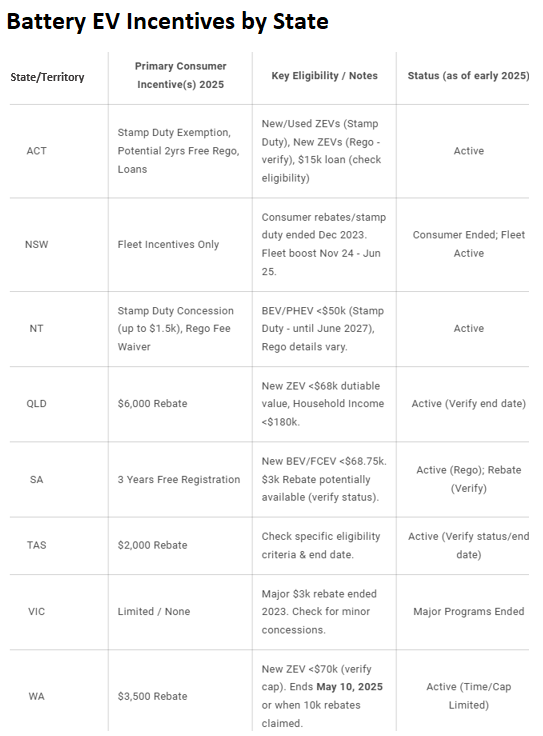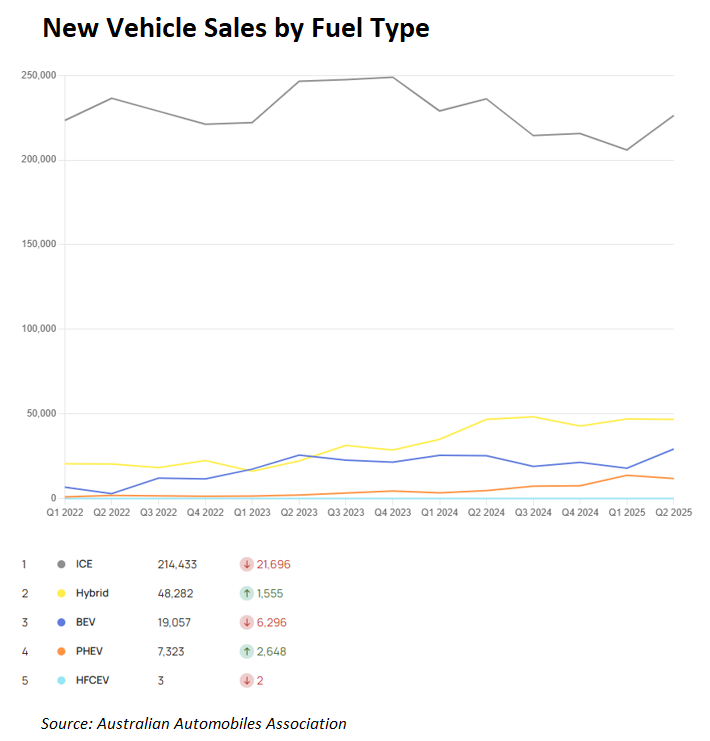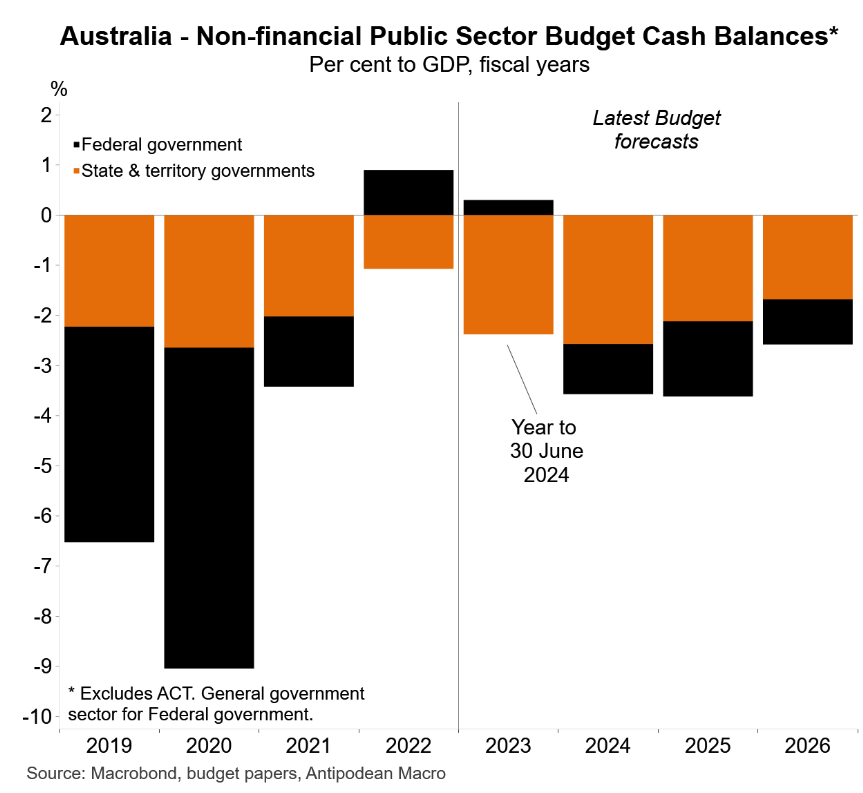Battery electric vehicles (BEVs) receive significant subsidies in Australia.
The federal government loses more than $500 million in tax revenue each year as a result of the Fringe Benefits Tax (FBT) exemption for BEVs. This figure is expected to rise as the number of BEVs on the road increases.
Under the FBT exemption, someone leasing a $60,000 car can save more than $12,000 per year by opting for a BEV over an internal combustion engine (ICE) or hybrid vehicle.
BEVs qualify for a higher luxury car tax threshold than ICE vehicles.
Several Australian states and territories provide direct subsidies, stamp duty exemptions, and registration discounts for battery electric vehicles.

BEVs are also exempt from road user taxes, including the 50.8 cents per litre fuel excise.
Despite a turnaround in Q2 2025, BEV sales remain low despite significant subsidies.

According to the Australian Automobile Association’s (AAA) Electric Vehicle Index, just 87,533 BEVs were sold in Australia in 2024-25, a 7.9% decrease from the 95,030 sold in 2023-24.
The percentage of BEVs in overall vehicle sales also declined, from 7.8% in 2023-24 to 7.4% in 2024-25.
Earlier this month, the Electric Vehicle Council lobby group released the findings of modelling prepared by Magenta Advisory exploring the impact of the FBT exemption for electric cars.
The modelling claimed that the FBT exemption could help to put an additional 1.5 million electric cars on Australian roads if extended until 2035. It had already aided in the purchase of 105,000 more EVs between 2022 and 2024.
“Keeping this support until 2035 and bringing back plug-in hybrids into the scheme could deliver hundreds of thousands more new and second-hand EVs, making them affordable for more households”, Electric Vehicle Council chief executive Julie Delvecchio said.
The Climate Change Authority has estimated that EVs will have to comprise 50% of new vehicle sales over the next decade to achieve the federal government’s 2035 emissions reduction target.
However, Federal Chamber of Automotive Industries CEO Tony Weber says there is not enough demand for electric vehicles, and it is unlikely that there will be a significant increase in EV sales in the short term without massive government subsidies.
“It’s hard to see how, without a subsidy, we’re going to get a substantial increase in the short term to EV sales”, he said.
“Worldwide evidence would suggest that the subsidy is one way in which you can do that”.
Weber said the industry was supplying nearly 100 BEV models but consumers were rejecting them. “The supply is coming on stream, the demand is not there”, he said.
I am philosophically opposed to using scarce taxpayer funds to subsidise private car purchases.
The bulk of these subsidies flows to wealthy, inner-city residents. They are middle-class welfare.
If BEVs were superior to ICE and hybrid vehicles, they wouldn’t need taxpayer subsidies because consumers would choose them because they are a better product.
The fact that the EV lobby continues to demand more subsidies, more incentives, or more tax breaks to “encourage” people to switch to a BEV is a tacit admission that BEVs cannot compete with ICE or hybrid cars on a level playing field.
Australian governments are engulfed in debt. They should stop wasting taxpayer money subsidising the purchase and use of BEVs.

There are many superior ways to spend scarce taxpayer money than subsidising private car purchases. Doing so is wasteful and inequitable.

